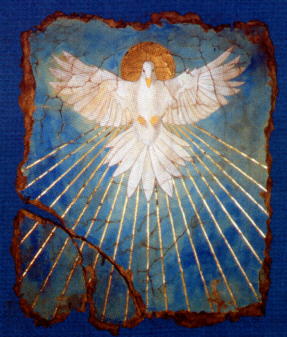Through intentional breathing, we are subtly able to effect both our heart rhythm and our interior life (see Heartmath Institute https://www.heartmath.org). Such gentle guidance of our interior life constitutes a form of asceticism whereby we can calm the disorders of the heart and create the opportunity to receive God’s love. In addition, the natural wisdom of techniques promoted by Heartmath and others can be put at the service of our relationship with Jesus. For example, in the Christian East, monks developed methods of integrating intentional breathing with short prayers from scripture.
Before we delve into the vast potential of praying with the breath, we should include a word of caution. Intentional breathing may produce pleasant sensations and may help in the short term, but the reality is that prayer techniques must be coupled with moral and spiritual conversion. In this way, we should understand that spirituality is not divorced from morality. Another way to put it is that meditation and prayer must be integrated into the constant call of Jesus Christ to experience healing and transformation in ways that free us to love God and neighbor. If we practice some esoteric spirituality while continuing to commit mortal sins, we are living in an illusion and not following the will of God.
With this in mind, praying with the breath can be a powerful means of helping us to open our hearts to the prompting of the Holy Spirit. As we move beyond discursive and analytic thinking, we give room for our more intuitive means of understanding. Of course, any intuition and inspiration must be weighed using good discernment, but often our overly rational way of seeing can limit our receptive potential. As the saying goes, sometimes we need to move from the head to the heart.
To do so, we can use a simple technique, and I encourage people to play with it. Traditionally, the Eastern Christians would use the Jesus prayer (Lord Jesus Christ, Son of God, have mercy on me a sinner), and they would combine its recitation with the breath. Thus on the inhales, they would pray part of the prayer, and on the exhale they would pray the other half. Likewise, St. Ignatius of Loyola suggests such a practice with the Our Father and the Hail Mary in his Spiritual Exercises.
In addition, while combining formal prayer with rhythmic breathing, they would also advise that one pay attention to the beating of the heart. When we learn to listen to our hearts, we often find that they give us clues about what we are experiencing. We begin to notice when our heart beat is elevated or what it seems weak.
In my own musings and explorations, I would add a few points to the classical wisdom. First, playing with different kinds of breaths can help to gently redirect our interior life. Fast breathing (without causing hyperventilation of course), can give us a little burst of energy and invigorate us when we feel sluggish or too relaxed. In addition, slow breaths can calm us down when the heart is beating out of control.
I also recommend that we use any phrase that helps us relate to the Lord and I also hold out the possibility that we need not use any phrase at all. My thinking is that we should be free to relate to the Lord however makes sense, and the methods are simply a kind of preliminary guide. They can be helpful when we are first starting, but we need not follow them meticulously at all times.
That leads me to my final point. I would agree with the Eastern writers who see such techniques as merely a preparation for what they called pure prayer. I would argue that pure prayer consists of our spontaneous giving and receiving in the Holy Spirit. Thus, pure prayer is the relationship established between us and God when the chains of sin have begun to be overcome and we begin to live in the freedom offered in Jesus Christ. Along these lines, we should feel free to leave behind any technique when the Holy Spirit leads us to deeper prayer.











[…] For a practical guide on praying with the breath, see http://www.contemplatio.us/taming-our-interior-life-with-the-breath/ […]
Thank you Father Ian.